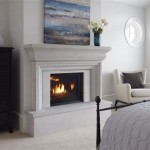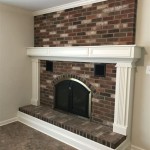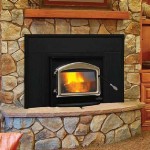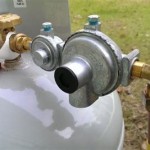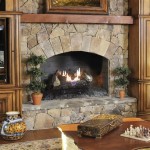Wood Fireplace Inserts in Boise, Idaho: A Comprehensive Guide
Boise, Idaho, with its cold winters and appreciation for cozy living, sees a significant demand for efficient heating solutions. Wood fireplace inserts represent a practical and aesthetically pleasing option for homeowners looking to upgrade their existing fireplaces. These inserts offer improved heating efficiency, reduced emissions, and enhanced safety compared to traditional open fireplaces. This article provides a detailed overview of wood fireplace inserts, specifically focusing on their relevance to Boise, Idaho residents.
A wood fireplace insert is essentially a self-contained firebox designed to be installed within the opening of an existing masonry fireplace. Unlike an open fireplace, which loses a substantial amount of heat up the chimney, a wood fireplace insert is engineered to radiate heat into the room. This is achieved through features such as a sealed firebox, a blower fan, and a more controlled air intake system. The result is a significant improvement in heating efficiency, often reaching 60-80% compared to the 10-20% efficiency of a traditional fireplace. This translates to lower fuel consumption and reduced heating costs for Boise homeowners.
Beyond heating efficiency, wood fireplace inserts also contribute to improved air quality. Modern inserts are designed to burn wood more completely, reducing the amount of smoke and particulate matter released into the atmosphere. Many models are EPA-certified, meeting strict emission standards. This is particularly relevant in Boise, where air quality concerns are a factor, especially during the winter months when wood burning is more prevalent. By choosing an EPA-certified wood fireplace insert, residents can enjoy the warmth and ambiance of a wood fire while minimizing their environmental impact.
The installation of a wood fireplace insert is a relatively straightforward process, typically involving sliding the insert into the existing fireplace opening and connecting it to a chimney liner. A chimney liner is crucial for safe and efficient operation, as it provides a proper draft and prevents creosote buildup within the chimney. Creosote is a flammable substance that can accumulate in chimneys and pose a significant fire risk. Professional installation, which is strongly recommended, ensures that the insert is properly fitted, the chimney liner is correctly installed, and all safety regulations are met. In Boise, several reputable companies specialize in the installation and maintenance of wood fireplace inserts.
The cost of a wood fireplace insert can vary depending on several factors, including the size of the insert, its heating capacity, the features it offers, and the brand. Generally, prices range from a few thousand dollars to several thousand dollars, including installation. While the initial investment may seem considerable, the long-term savings in heating costs, combined with the improved air quality and safety, often make it a worthwhile investment for Boise homeowners. Furthermore, some utility companies and government agencies offer rebates and incentives for the purchase and installation of EPA-certified wood fireplace inserts, which can further offset the initial cost.
Key Point 1: Enhanced Heating Efficiency and Cost Savings
The primary advantage of wood fireplace inserts over traditional fireplaces lies in their significantly improved heating efficiency. Open fireplaces are notoriously inefficient, losing the majority of their heat up the chimney. This is due to the large opening, the lack of a controlled air intake, and the absence of mechanisms to effectively radiate heat into the room. Consequently, homeowners often find that they need to supplement their fireplace with other heating sources, leading to increased energy bills.
Wood fireplace inserts, on the other hand, are designed to maximize heat output and minimize heat loss. The sealed firebox prevents heat from escaping up the chimney, while a built-in blower fan circulates warm air into the room. The controlled air intake allows for more efficient combustion, resulting in higher temperatures and less wasted fuel. Many modern inserts also feature catalytic combustors or secondary combustion chambers, which further improve efficiency by burning off unburned gases and particles. As a result, wood fireplace inserts can provide significantly more heat with less wood, leading to substantial cost savings for Boise homeowners during the cold winter months.
To quantify the potential cost savings, consider a typical scenario. A homeowner with an inefficient open fireplace might burn several cords of wood each winter to achieve minimal heating. With a wood fireplace insert, they might be able to achieve the same level of heating with half the amount of wood. Considering the cost of firewood in Boise, which can range from several hundred dollars to over a thousand dollars per cord, the savings can be substantial. Furthermore, the reduced reliance on other heating sources, such as electric heaters or natural gas furnaces, can further lower energy bills.
Selecting the right size and heating capacity is crucial for maximizing efficiency and cost savings. An oversized insert will consume more wood than necessary, while an undersized insert will not provide adequate heating. It is recommended to consult with a professional installer to determine the appropriate size and BTU rating for a given space. Factors to consider include the square footage of the area to be heated, the insulation levels of the home, and the climate conditions in Boise.
Key Point 2: Improved Air Quality and Environmental Considerations
Air quality is a growing concern in many urban areas, including Boise, particularly during the winter months when wood burning is more prevalent. Traditional open fireplaces contribute significantly to air pollution, releasing substantial amounts of smoke, particulate matter, and other harmful pollutants into the atmosphere. These pollutants can have adverse health effects, particularly for individuals with respiratory conditions such as asthma or bronchitis.
Wood fireplace inserts offer a cleaner and more environmentally friendly alternative to open fireplaces. Modern inserts are designed to burn wood more completely, reducing the amount of smoke and particulate matter released into the atmosphere. Many models are EPA-certified, meeting stringent emission standards set by the Environmental Protection Agency. These standards limit the amount of particulate matter that can be emitted per hour of operation. EPA-certified inserts typically incorporate advanced combustion technologies, such as catalytic combustors or secondary combustion chambers, to achieve these low emission levels.
Catalytic combustors consist of a ceramic honeycomb coated with a catalyst material, such as platinum or palladium. As smoke and unburned gases pass through the combustor, the catalyst promotes oxidation, converting these pollutants into carbon dioxide and water vapor. Secondary combustion chambers introduce preheated air into the firebox, further promoting complete combustion. These technologies significantly reduce the amount of smoke and particulate matter released into the atmosphere, improving air quality and minimizing the environmental impact of wood burning.
In addition to reducing emissions, wood fireplace inserts also promote sustainable forestry practices. By burning wood more efficiently, homeowners can reduce their overall wood consumption, lessening the demand for timber harvesting. Furthermore, many homeowners in Boise source their firewood from local suppliers who adhere to sustainable forestry practices. These practices ensure that forests are managed responsibly, promoting biodiversity and preventing deforestation.
Choosing an EPA-certified wood fireplace insert is a responsible choice for Boise homeowners who are concerned about air quality and the environment. By reducing emissions and promoting sustainable forestry practices, these inserts contribute to a cleaner and healthier environment for the entire community.
Key Point 3: Safety Features and Installation Considerations
Safety is a paramount concern when operating any type of heating appliance, and wood fireplace inserts are no exception. While modern inserts offer several safety features that mitigate potential risks, proper installation and maintenance are essential for ensuring safe and reliable operation. A poorly installed or maintained insert can pose a fire hazard, as well as produce excessive amounts of carbon monoxide.
One of the most important safety features of a wood fireplace insert is the sealed firebox. This prevents sparks and embers from escaping into the room, reducing the risk of fire. The sealed firebox also prevents the backdrafting of smoke and carbon monoxide into the home. Carbon monoxide is a colorless and odorless gas that can be deadly if inhaled in high concentrations. A properly sealed firebox, in conjunction with a functioning chimney liner, ensures that all combustion gases are safely vented outside the home.
A chimney liner is a crucial component of any wood fireplace insert installation. The liner provides a smooth and continuous flue for the exhaust gases to travel through, preventing creosote buildup and ensuring proper draft. Creosote is a flammable substance that can accumulate in chimneys and pose a significant fire risk. A chimney liner also protects the masonry of the chimney from the corrosive effects of combustion gases. There are several types of chimney liners available, including stainless steel liners, clay tile liners, and cast-in-place liners. Stainless steel liners are generally considered the most durable and reliable option.
Professional installation is strongly recommended for wood fireplace inserts. A qualified installer will ensure that the insert is properly sized and installed according to manufacturer's instructions and local building codes. The installer will also inspect the chimney to ensure that it is in good condition and that a suitable chimney liner is installed. Furthermore, the installer will provide guidance on the safe operation and maintenance of the insert.
Regular maintenance is essential for ensuring the safe and efficient operation of a wood fireplace insert. This includes cleaning the chimney regularly to remove creosote buildup, inspecting the door seals for leaks, and checking the operation of the blower fan. It is also important to use seasoned firewood, which burns more cleanly and produces less creosote than green wood. Seasoned firewood has a moisture content of less than 20% and has been air-dried for at least six months.
By following these safety guidelines and ensuring proper installation and maintenance, Boise homeowners can enjoy the warmth and ambiance of a wood fireplace insert without compromising their safety or the safety of their homes.

Electric Fireplace Insert Kootenai St Boise Idaho Chimney

Leisure Time Inc Hot Tubs Fireplaces Saunas More

Whole Fireplaces Of Idaho 3919 W Overland Rd Boise Fireplace Services Phone Number Yelp

Fireplace Whole 11691 W President Dr Boise Idaho Services Phone Number Yelp

Wood Fireplaces The Warming Trend

Wood Fireplaces The Warming Trend

Fireplaces Nampa Caldwell Fireplace Cleaning Repair Air Comfort

Pioneer Ii Wood Fireplace Leisure Time Inc

Fireplace Whole 11691 W President Dr Boise Idaho Services Phone Number Yelp

Home The Warming Trend
Related Posts

